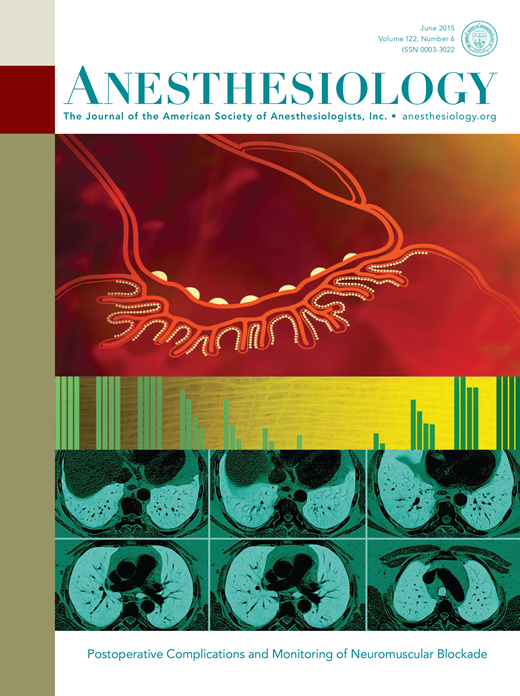Erector spinae plane block versus intercostal nerve blocks in uniportal videoscopic assisted thoracic surgery: a multicenter, double-blind, prospective randomized placebo controlled trial.
IF 9.1
1区 医学
Q1 ANESTHESIOLOGY
引用次数: 0
Abstract
BACKGROUND Although, intercostal nerve blocks are sometimes approached with caution due to concerns about potentially high local anesthetic uptake, they remain a valuable tool in specific clinical situations. On the other hand, the erector spinae plane block is nowadays often favored for its broader coverage and versatility. We hypothesized that the intercostal nerve block, applied directly by surgeons under direct vision in patients undergoing uniportal video-assisted thoracoscopic surgery, might offer superior analgesia and fewer complications compared to the erector spinae plane block. METHODS In this multi-center, double-blind placebo controlled, randomized trial, 100 patients undergoing uniportal thoracoscopic surgery (wedge excision or lobectomy) within an enhanced recovery program received either a surgical intercostal nerve block under thoracoscopic guidance or an ultrasound-guided erector spinae plane block, followed by 30 ml of ropivacaine 0.5% (n=50) or saline (n=50). Primary outcome measured was 12-hour morphine consumption post-extubation. Secondary outcomes included 24-hour morphine use, pain severity, rescue analgesia need, postoperative complications, and length of stay. Plasma levels of local anesthetics were also assessed. RESULTS The intercostal nerve block group had significantly lower mean 12-hour morphine consumption compared to the erector spinae plane block group (10.9 mg vs. 17.6 mg, p=0.0015), as well as lower mean 24-hour consumption (18.7 mg vs. 26.7 mg, p=0.018). Intercostal blocks also led to lower pain scores in the first two hours postoperatively and a reduced need for rescue analgesia (16% vs. 40%, p=0.0033). No differences were found in patient satisfaction, complications, or length of stay. Notably, the erector spinae plane block group showed higher systemic absorption of local anesthetics. CONCLUSION For uniportal thoracoscopic surgery, intercostal nerve block significantly reduces morphine consumption and systemic anesthetic absorption compared to erector spinae plane block.竖脊肌平面阻滞与肋间神经阻滞在单门腔镜辅助胸外科中的应用:一项多中心、双盲、前瞻性随机安慰剂对照试验。
背景虽然肋间神经阻滞有时需要谨慎处理,因为担心可能会有高的局部麻醉摄取,但在特定的临床情况下,它们仍然是一种有价值的工具。另一方面,竖脊平面块由于其更广泛的覆盖范围和多功能性而受到青睐。我们假设肋间神经阻滞由外科医生在直视下直接应用于接受单门电视胸腔镜手术的患者,与竖脊肌平面阻滞相比,可能具有更好的镇痛效果和更少的并发症。方法在这项多中心、双盲安慰剂对照、随机试验中,100例接受单门胸腔镜手术(楔形切除或肺叶切除术)的患者在增强恢复计划中接受胸腔镜引导下的外科肋间神经阻滞或超声引导下的直立者脊柱平面阻滞,随后给予30ml 0.5%罗哌卡因(n=50)或生理盐水(n=50)。测量的主要结局是拔管后12小时吗啡消耗。次要结局包括24小时吗啡使用、疼痛严重程度、抢救性镇痛需求、术后并发症和住院时间。还评估了局部麻醉剂的血浆水平。结果肋间神经阻滞组12小时吗啡平均用量显著低于竖脊肌平面阻滞组(10.9 mg vs. 17.6 mg, p=0.0015), 24小时吗啡平均用量显著低于竖脊肌平面阻滞组(18.7 mg vs. 26.7 mg, p=0.018)。肋间阻滞也导致术后前两小时疼痛评分较低,并且减少了对救性镇痛的需求(16%对40%,p=0.0033)。在患者满意度、并发症或住院时间方面没有发现差异。值得注意的是,竖脊肌平面阻滞组显示出更高的全身局麻药吸收。结论在单门胸腔镜手术中,肋间神经阻滞比竖脊面阻滞能显著减少吗啡的消耗和全身麻醉剂的吸收。
本文章由计算机程序翻译,如有差异,请以英文原文为准。
求助全文
约1分钟内获得全文
求助全文
来源期刊

Anesthesiology
医学-麻醉学
CiteScore
10.40
自引率
5.70%
发文量
542
审稿时长
3-6 weeks
期刊介绍:
With its establishment in 1940, Anesthesiology has emerged as a prominent leader in the field of anesthesiology, encompassing perioperative, critical care, and pain medicine. As the esteemed journal of the American Society of Anesthesiologists, Anesthesiology operates independently with full editorial freedom. Its distinguished Editorial Board, comprising renowned professionals from across the globe, drives the advancement of the specialty by presenting innovative research through immediate open access to select articles and granting free access to all published articles after a six-month period. Furthermore, Anesthesiology actively promotes groundbreaking studies through an influential press release program. The journal's unwavering commitment lies in the dissemination of exemplary work that enhances clinical practice and revolutionizes the practice of medicine within our discipline.
 求助内容:
求助内容: 应助结果提醒方式:
应助结果提醒方式:


